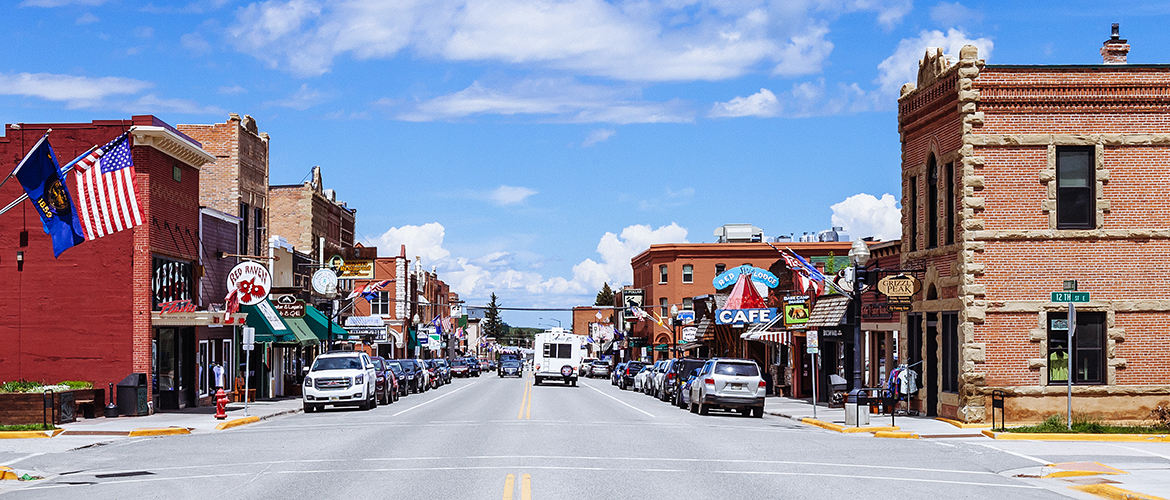Every Friday, Karl Rosston reviews Montana death certificates — more than 1,100 over the past five years — to better understand who dies by suicide and prevent others from taking their own lives.
Victims tend to be white, middle-aged men with guns. They are of a generation that believes the strong shoulder their responsibilities and keep problems to themselves. Suppressed depression becomes a burden too heavy to bear.
“In Montana, there’s a cowboy mentality,” says Rosston, the state’s suicide prevention coordinator, a position created in 2007 to lead statewide prevention initiatives. “Depression is considered a weakness. The stigma is huge.”
Finding solutions
For decades, Montana, where outliers of the Rocky Mountains meet the Great Plains, has held the woeful distinction of having one of the highest suicide rates nationwide. Suicides are so pervasive that Rosston and the Montana’s Suicide Mortality Review Team are looking for help from everyone, law enforcement, clergy, health care professionals, schools, businesses and residents of all ages.
Health Care Service Corporation has joined the efforts. Last year, HCSC's plan in Montana donated $250,000 to support a new psychiatry residency at the University of Washington designed to bring more mental health professionals to Montana. The program will train residents dedicated to working in rural areas.
The insurer also has funded a theater production, “Every Brilliant Thing,” a play about suicide, depression and resilience to be performed in 50 communities throughout the state. The tour seeks to diminish the shame associated with suicide and mental illness.
The one-person production based out of Helena’s Grandstreet Theatre relies on audience participation and celebrates the brilliant things that make life worth living.
“You would be hard-pressed to find anyone who isn’t affected by suicide and behavioral health issues,” says Dr. Tim Wetherill, executive medical director for HCSC in Montana.
Suicide is such a complicated problem that he believes it’s going require the involvement of people, businesses and organizations throughout the state to come up with solutions.
“We are part of the community,” Wetherill says. “We want to do anything that we can do to help reduce the stigma, the shame, the fear.”
An immense problem
Montana’s suicide rate in 2017 — 29.6 people for every 100,000 residents — was the highest in the U.S. and nearly twice the national rate, according to the most recent information from the U.S. Centers for Disease Control and Prevention.
Montana has ranked among the top five states for suicides among all age groups for the past 30 years.
"In any given room in any given setting, there are people who feel the exact same way.”
Health experts in Montana point to a complex array of issues that may contribute to the problem, according to a report by the Department of Public Health and Human Services.
One is that the state’s expansive geography creates a sense of isolation. Montana has just 6.8 people per square mile. More than 600,000 Montanans live in areas with shortages of mental health providers.
If you or someone you know is struggling, call 1-800-273-8255 for help.
Visit The Big Blue Sky Initiative for more resources on suicide prevention in Montana.
Other factors include alcohol and drug abuse, access to firearms, poverty and a culture that views depression as weakness, according to the report.
Demographics also play a role. Montana is home to many veterans, Native Americans and middle-aged white men — all of whom have disproportionately high suicide rates.
But the problem goes beyond these groups.
“Suicide is multicultural, it’s multi-age,” Wetherill says. “It affects every one of us. It doesn’t matter if you’re working for an insurance company or you’re a hairdresser or you’re a plumber. It’s something all of us should be aware of and have a role to play.”
For Wetherill, that means sharing his own experiences with suicidal ideations to encourage others to acknowledge their emotions and feel comfortable expressing them.
“It’s really, really hard when you get in those deep moments to pull yourself out,” he says. “We just have to break down that barrier of shame. We’re all playing the same game, and we’re all human. In any given room in any given setting, there are people who feel the exact same way.”
Given suicide’s long and powerful grasp on Montana, the slightest possible breakthrough is considered remarkable — such as a single year without a student suicide at the high school that Wetherill’s son attends.
“It’s certainly recognized as moving in the right direction,” Wetherill says. “When you have that many kids taking their own lives, boy, it makes you stop and think and recalibrate.”
Therapeutic theater
On a July night, about 60 people strolled into Cottonwood Theater in downtown Big Timber, Mont., to watch “Every Brilliant Thing.” An agricultural city of around 1,650, Big Timber holds few live theatrical events. The play offered residents a unique opportunity to see a performance, as well as talk about mental health and suicide prevention.
It felt like a community intervention.
The show, followed by a discussion with local mental health experts, allowed producer and actor Rosie Seitz Ayers to help fellow Montanans start breaking the stigma of mental illness in their community.
As a teenager, Ayers struggled with drugs and alcohol and twice tried to kill herself. She told her story to engage the audience and kick off a lively conversation.
“We get a lot of hugs. We get a lot of tears. We get a lot of laughter,” Ayers says. “We get a lot of sharing of personal experiences with the community members.”
Performing the play is Ayers' way of bringing hope to people statewide who may be desperate to hear her message.
“This play has healed pieces in me that I didn’t even know needed to be healed,” she says. “I’ve known for a long time I wanted to be part of the solution. I can’t think of a better way to honor the place I was born and raised.”

